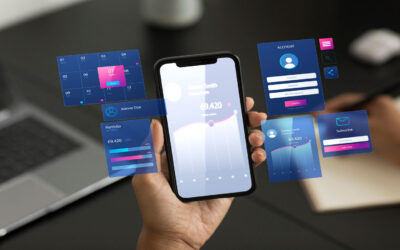Introduction
The digital landscape, having a robust mobile presence is essential for businesses to thrive. With millions of iPhone users worldwide, developing a custom iPhone app can be a pivotal move for your business’s growth and success. However, the journey from conceptualization to deployment involves intricate planning and execution. In this comprehensive guide, we’ll walk you through the essential steps to plan your iPhone app development project effectively, ensuring a smooth and successful journey from ideation to launch.
Define Your Goals and Objectives
Before diving into the intricacies of app development, it’s imperative to establish clear goals and objectives for your iPhone app. Ask yourself questions such as:
What specific problem does your app aim to solve?
Who is your target audience, and what are their needs and preferences?
What key performance indicators (KPIs) will determine the success of your app?
By defining your goals upfront, you lay the foundation for a focused and purpose-driven development process.
Conduct Market Research
Market research is a critical phase that provides invaluable insights into your target market, competitors, and industry trends. Conduct a thorough analysis to:
Understand your target audience’s demographics, behaviors, and pain points.
Analyze competitors’ apps to identify gaps and opportunities.
Stay updated on emerging trends and technologies shaping the mobile app landscape.
Armed with these insights, you can tailor your app to meet the specific needs and preferences of your target audience while differentiating it from competitors.
Outline Your App’s Features and Functionality
Based on your goals and market research findings, create a detailed outline of your app’s features and functionality. Consider both core features essential for addressing users’ primary needs and secondary features that enhance the user experience. Prioritize features based on their importance and feasibility within your project scope and budget.
Create Wireframes and Prototypes
Visualize your app’s structure and user flow by creating wireframes and prototypes. These low-fidelity representations allow you to:
Refine the app’s navigation and layout.
Identify potential usability issues early in the design process.
Gather feedback from stakeholders to iterate and improve the app’s design iteratively.
Choose the Right Development Partner
Selecting the right development partner is crucial for the success of your iPhone app. Consider factors such as:
Experience and expertise in iPhone app development.
Portfolio showcasing previous projects and client testimonials.
Compatibility with your project’s scale, timeline, and budget constraints.
Partnering with a reputable development agency ensures access to skilled professionals who can bring your app vision to life while adhering to industry best practices and standards.
Define Your Technical Requirements
Collaborate with your development partner to define the technical requirements for your app, including:
Technology stack (programming languages, frameworks, databases).
Integration with third-party services or APIs.
Data storage and security measures.
Scalability and performance considerations.
Clear communication of your technical requirements ensures alignment between your expectations and the development team’s capabilities.
Develop a Project Timeline and Budget
Establish a realistic project timeline and budget based on your app’s scope, complexity, and desired features. Break down the development process into manageable milestones and allocate resources accordingly. Be prepared to accommodate unforeseen challenges or changes in scope that may arise during development.
Design Your App’s User Interface (UI) and User Experience (UX)
Invest in creating an intuitive and visually appealing user interface (UI) and user experience (UX) for your app. Work closely with designers to:
Incorporate your brand identity and visual elements.
Ensure seamless navigation and interaction.
Optimize the app’s layout for different screen sizes and resolutions.
A well-designed UI/UX enhances user satisfaction and engagement, driving the app’s success in the competitive app market.
Conduct Testing and Quality Assurance (QA)
Prioritize testing and quality assurance (QA) throughout the development process to identify and rectify any issues before launch. Perform:
Functional testing to ensure all features work as intended.
Compatibility testing across various iPhone models and iOS versions.
Performance testing to optimize the app’s speed and responsiveness.
Security testing to identify vulnerabilities and ensure data protection.
Rigorous testing minimizes the risk of post-launch issues and enhances the app’s overall quality and reliability.
Launch Your App and Gather Feedback
With development and testing complete, it’s time to launch your app to the Apple App Store. Prepare compelling app store listings and marketing materials to attract users’ attention. Monitor user feedback and app performance post-launch, and be proactive in addressing any issues or concerns raised by users.
Provide Ongoing Support and Maintenance
The journey doesn’t end with the app’s launch; it’s essential to provide ongoing support and maintenance to ensure its long-term success. Regularly update the app to fix bugs, introduce new features, and adapt to changing user needs and technological advancements. Monitor app analytics to track user engagement and identify opportunities for improvement.
Conclusion
Planning an iPhone app development project requires meticulous attention to detail and careful consideration of various factors. By following these steps and best practices, you can streamline the development process, mitigate risks, and maximize the chances of your app’s success in the competitive app market. If you’re ready to embark on your iPhone app development journey, partner with us to transform your app idea into reality. Together, we’ll build an exceptional iPhone app that delights users and drives your business forward.
Search
Categories
- AI 3
- Analytics & Data Science 16
- Blogs 7
- Brand Identity 22
- Business 10
- CMS & LMS 22
- Development 1
- Digital Marketing 19
- Digital Signage 12
- E-commerce 6
- Education & E-Learning 1
- Enterprise solution 15
- Events 1
- Internet of Things 9
- Mobile App Development 15
- News 5
- Open Source Development 12
- SEO Search engine optimization 2
- Staff Augmentation 1
- Uncategorized 4
- Web Design 1
- Web Development 19
- Web Security and Performance 18
- Website Development 1
- WordPress Development 3






